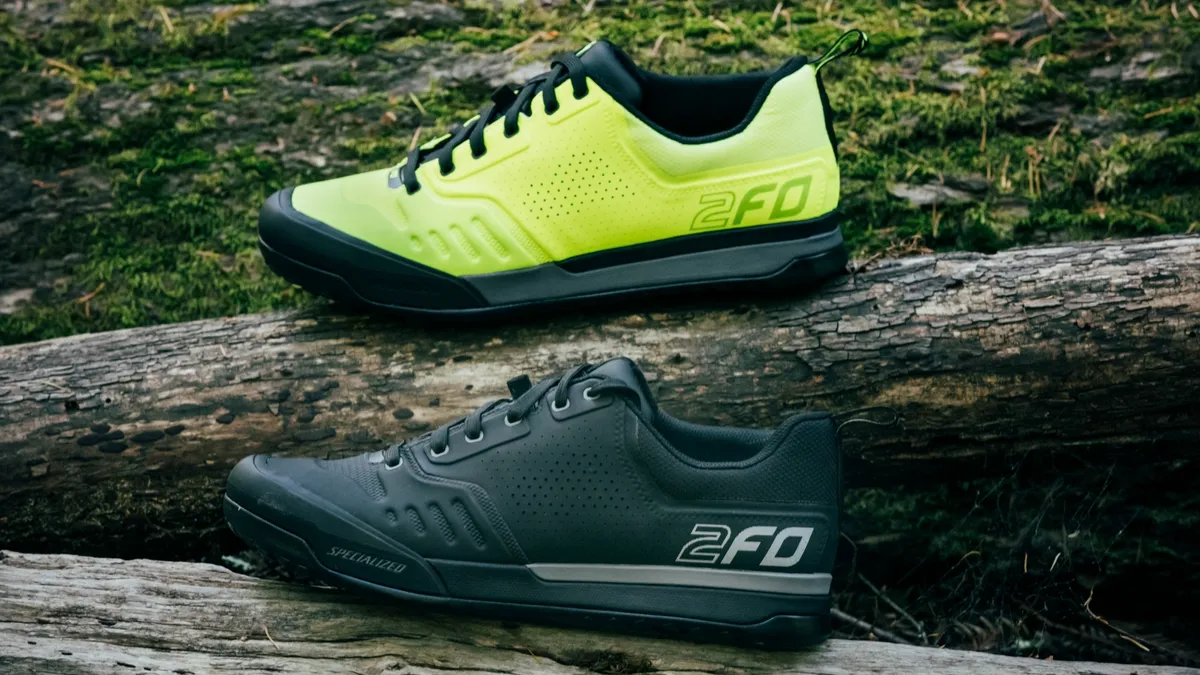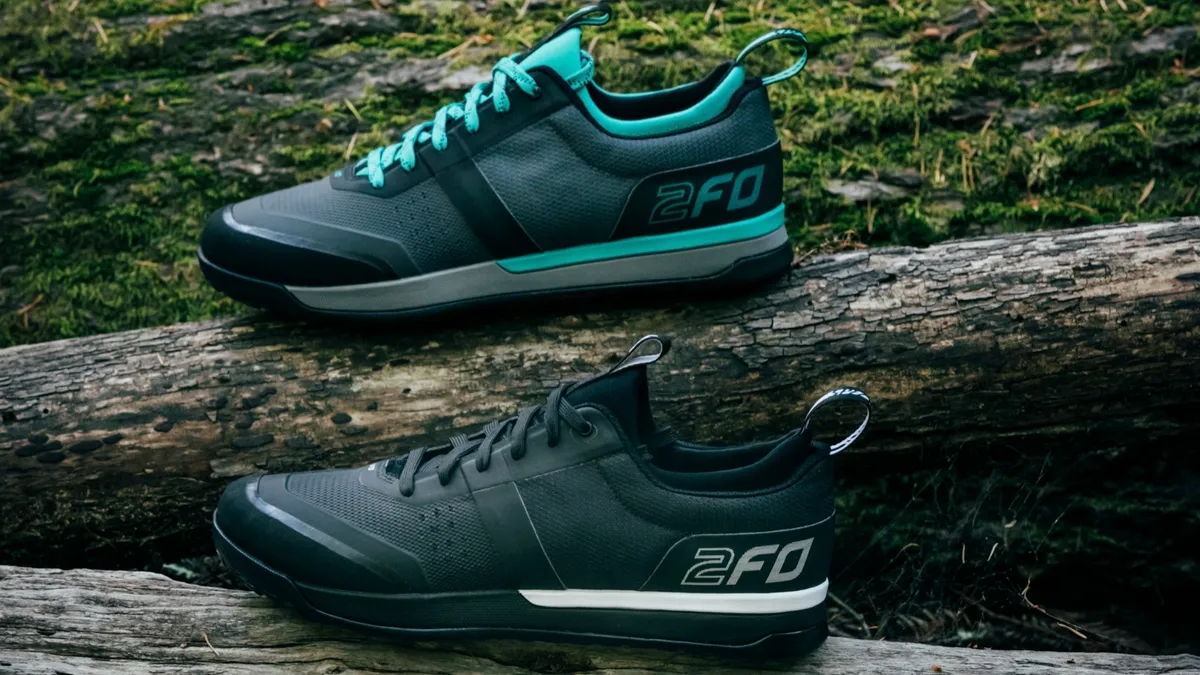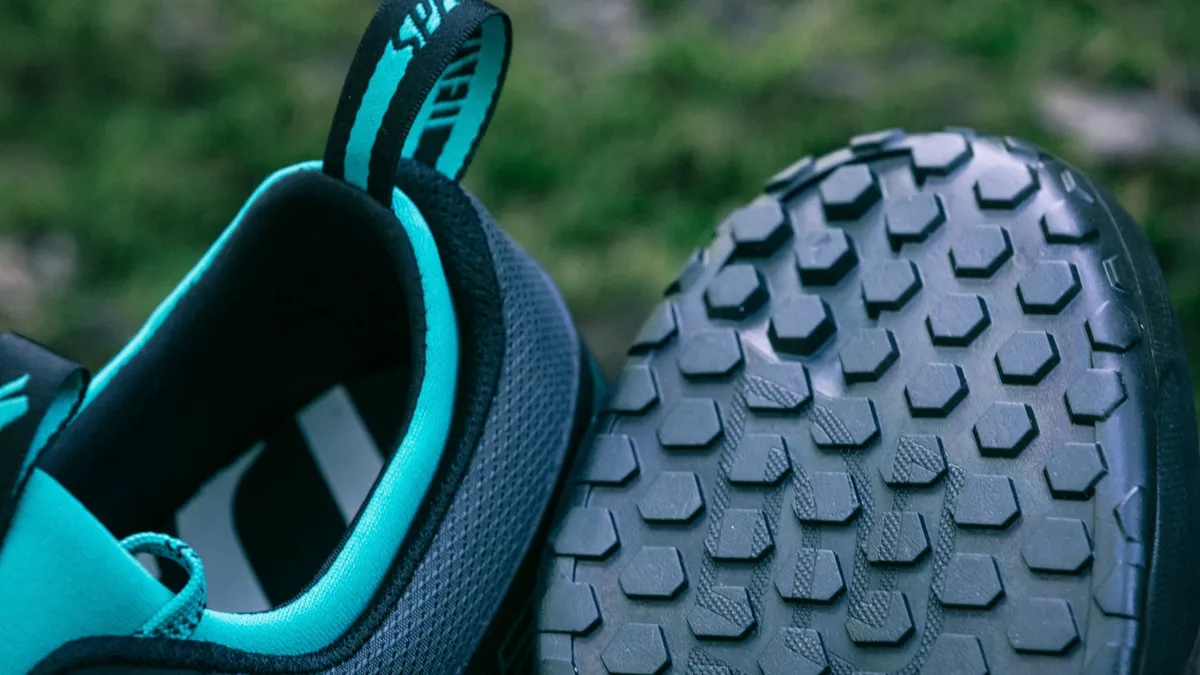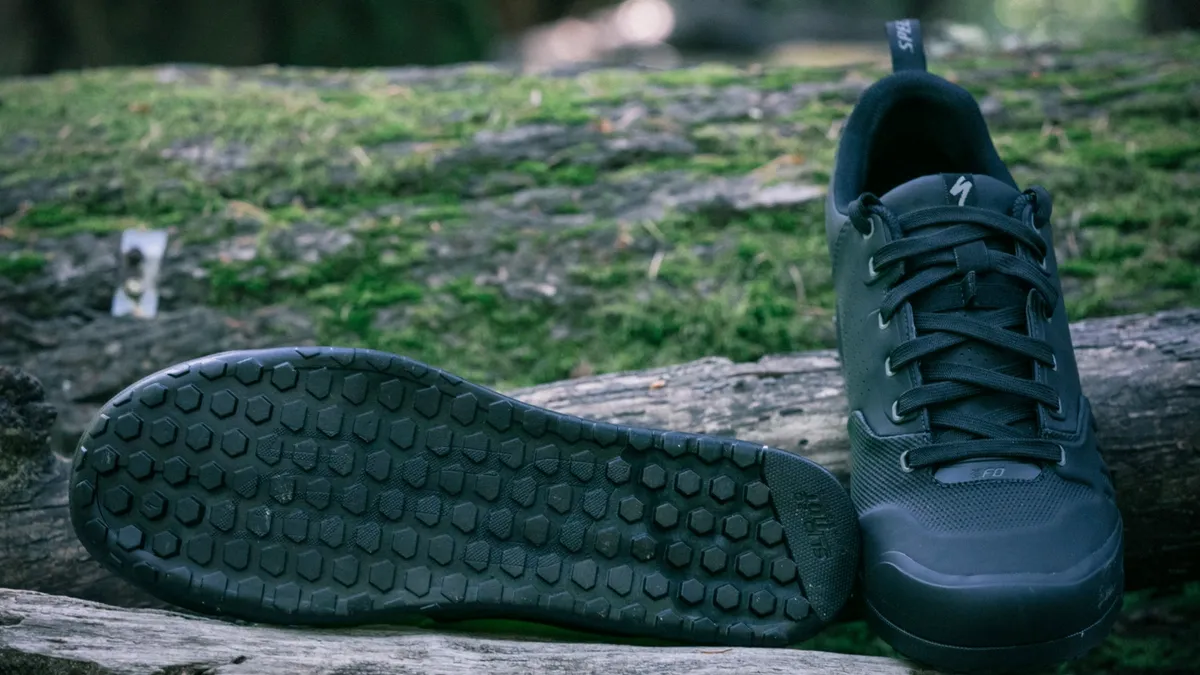It was around three years ago that Specialized launched its gravity line of shoes, which included the 2FO flat pedal shoe.
While the clipless shoe has won many fans the world over (that includes me), the flat pedal version definitely had some room for improvement. Thankfully, Specialized was well aware of its issues and spent a solid 18 months attempting to put them right.
- Cube All Mountain Pro shoe review
- Specialized Women's 2FO vs. Five Ten Freerider Contact Women's Flat MTB shoes
- Scott MTB Pro shoe review
Dancing with data
With the help of the Coastal Crew — Specialized's band of loam shredding, jump boosting lunatics — alongside some rather fancy live data logging equipment, Specialized set about rectifying the problems many of us found with the old shoe.
The aim was to analyse just how the shoes interact with the pedal while on the trail. In all, Specialized says it tested 18 variants while developing the new shoes.
Yes, I said shoes because there's actually more than one pair for 2018, with the new range being divided in two.
The top of the line shoe seen here is the 2FO 2.0, while a cheaper, more trail orientated 2FO 1.0 comes in a shade cheaper at £100 / $110.
More than meets the eye

The new 2.0 shoes might not look drastically different, and that's because the changes to the uppers at least are very subtle. While the toe box itself is almost unchanged, there's no longer any perforated venting right above the toe, making these a little better when it comes to tackling puddle splashes and downpours.
The inside ankle is still raised for better protection against crank knocks when scrabbling to get your foot back on, but isn't as heavily padded on the new shoe.
The tongue on the new 2.0s no longer gets cutaway corners and is softer and thicker than the previous offering. You also get a loop at the back of the ankle to help pull the shoes on.
The really big difference is the sole. While the arch on the insole doesn't feel as pronounced, it's the flexibility under foot and comfort and traction on the pedal that's been dramatically improved.

The new sole features a revised SlipNot 2.0 rubber compound that's far tackier than the original. Like the original, a number of the toe and heel treads are more pronounced to help with time spent off the bike and in the dirt. The new shoe's treads are also smaller and less tightly packed.
Overall flexibility of the shoe has vastly improved too. While the last shoe was quite stiff, the new shoe offers a far more forgiving feel, thanks in part to the cushioned EVA foam mid-sole. It also feels shallower, meaning you don't feel disconnected from the pedal as you sometimes could with the first iteration.
In terms of weight, the new 2.0 manages to trump its predecessor by some margin. While the original 2FOs weighed in at 830g (size 43) per pair, the new 2.0s tip the scales at 736g (size 43).
On the trail

The 2FO 2.0s feel instantly connected with the pedal, both in terms of grip and feel through the shoe.
The added flexibility and cushioning through the sole doesn't feel like it detracts from pedal efficiency, but simply helps to bolster grip on the pins and comfort. There's no guessing where the pedal is or sense of vagueness.
The added comfort is also a massive plus. After rattling down a number of Alpine descents, the soles of my feet certainly never felt battered or beaten up.
Traction on the pedal has been massively improved and in a month of use I've only had a couple of incidences where I've hammered into rough sections of trail and had to re-positioned my foot due to getting bumped about a little.
For the most part they've stayed totally glued in place, providing sure-footed grip and confidence.
Are they as close to Five Ten’s Impacts? Yeah, they’re certainly not far off, though not quite as vice like.
While the 2.0s might not feel quite as airy as the older shoe, they still feel light, even when wet which is a real plus. They dry pretty quickly too.
Off the bike, the 2FO 2.0s are some of the comfiest shoes I've worn, with no heel slip and fantastic for tackling hike-a-bike sections in the mountains or pushing back up to session a section of trail.
After just a month of use, it's hard for me to accurately comment on durability. That said, both soles on my sample pair are showing more signs of wear than I'd expect but, I'll have to keep you posted on how this goes over the next 6–12 months.

